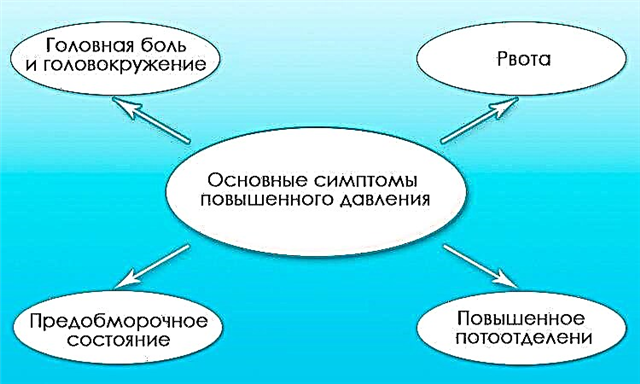Epiglottitis is an inflammatory process localized in the epiglottis and adjacent tissues. The epiglottis plays an important role in the body by preventing food from entering the trachea. It blocks the organ when food is swallowed, so a person cannot inhale and swallow at the same time. If an infection enters the body or is injured, symptoms of inflammation of the epiglottis may appear, as a result of which edema occurs, and the passage to the trachea decreases. In especially difficult situations, the enlarged epiglottis can completely block the passage to the trachea, which can cause a sharp impairment of the airway and even suffocation.
Causes
 Inflammation of the epiglottis most often occurs in young children in the first years of life (two to four years), but this does not exclude the possibility of the disease occurring at an older age and even in adults.
Inflammation of the epiglottis most often occurs in young children in the first years of life (two to four years), but this does not exclude the possibility of the disease occurring at an older age and even in adults.
The ingestion of the bacteria hemophilus influenza (hemophilic infection) is the most common cause of acute epiglottitis. Bacteria enter the body by airborne droplets, while, if immunity is not reduced, the development of inflammation may not occur immediately. The infection is often latent until conditions are favorable for it. This type of pathogenic microorganisms can also cause other serious diseases (meningitis, pneumonia), dangerous for their complications.
Also among the reasons that can cause inflammation are:
- streptococci;
- stasis virus;
- pneumococci;
- fungal infection of candida.
Along with infections, there are other reasons that can provoke epiglottitis:
- burns of the oral mucosa and respiratory tract due to eating too hot food, inhalation of chemical vapors;
- direct trauma to the epiglottis by a foreign object;
- the use of drugs such as heroin and cocaine.
Symptoms
The development of the disease is characterized by rupture of capillaries, which is accompanied by the appearance of small hemorrhages. The tissue of the epiglottis is damaged, the penetration of a bacterial infection into the submucosal layers, which causes inflammation and swelling. Depending on the degree of development of the inflammatory process, various stages of the disease are distinguished.
At an early stage, epiglottitis is accompanied by symptoms typical of the common cold:
- rhinitis, nasal congestion;
- weakness, loss of strength;
- headache;
- increased body temperature.
The further development of the disease occurs very quickly. A couple of hours after the first signs of the disease appear, symptoms characteristic of inflammation of the epiglottis may appear:
- sharp pain in the throat;
- significant increase in temperature;
- difficulty swallowing;
- labored, noisy breathing;
- increased irritability, insomnia.
In this case, the infection often affects not only the epiglottis, but can also cause inflammation in other parts of the nasopharynx.
Important! To prevent the development of epiglottitis in children in the first months of life, vaccination (Hib vaccine against hemophilus influenzae) is indicated.
 In the case when the patient is not provided with timely medical assistance, the disease can progress to a later stage, which is characterized by:
In the case when the patient is not provided with timely medical assistance, the disease can progress to a later stage, which is characterized by:
- the appearance of signs of oxygen deficiency (pallor of the skin, cyanosis of the nasolabial triangle);
- a sharp decrease in voice;
- shortness of breath;
- swelling of the wings of the nose when inhaling;
- high salivation;
- a person acquires a pose inherent in epiglottitis (an elongated neck, an open mouth, a protruding tongue).
Depending on the nature of the development of the infection, three forms of inflammation are distinguished:
- Edematous - characterized by a strong increase in temperature (up to 39 degrees), a sharp sore throat, pain in the neck, intoxication. In a blood test, leukocytosis, an increase in ESR are usually determined.
- Absolute and infiltrative forms, which are characterized by inflammation of the epiglottis, high fever, general weakness. A distinctive feature of these types of epiglottitis are painful changes in the face that occur due to a lack of oxygen, a grayish coating on the tongue, a significant increase in the epiglottis, severe inspiratory dyspnea, inflammation of the perichondrium and cartilage of the larynx.
Diagnostics
An experienced specialist can easily recognize epiglottitis by the symptoms characteristic of this disease (extended head, open mouth, protruding tongue). However, making an accurate diagnosis and examining the throat in this condition, especially if epiglottitis in children, can be problematic.
Important! With epiglottitis, do not examine the pharynx with a spatula, pushing down the tongue, as this can cause spasm and airway obstruction.
Therefore, to clarify the diagnosis, additional diagnostic procedures are used:
 throat x-ray to determine the severity of edema;
throat x-ray to determine the severity of edema;- a general analysis of blood and urine to determine the type of infection that caused the disease and the degree of the inflammatory process;
- oropharyngeal swab for bacterial culture to determine the resistance of the pathogen to various types of antibiotics;
- examination of the epiglottis using a special fibrolaryngoscope using the tracheal intubation method.
Treatment
Treatment of inflammation of the epiglottis always requires seeking help from specialists; self-medication in this case cannot be done.
When diagnosed with epiglottitis in adults, treatment will be similar to that in children. However, it should be borne in mind that at a young age, it is more difficult to treat inflammation in the epiglottis, since the rapid development of the disease is characteristic. Therefore, at the first suspicion of epiglottitis, you should seek medical help.
In the hospital, treatment is primarily aimed at recovering from breathing difficulties. To do this, under anesthesia, a special tube is inserted into the respiratory tract. In the complex therapy of inflammation of the epiglottis, a number of procedures are carried out:
- Since the disease is caused by the action of bacteria, epiglottitis is treated with antibiotics: amoxiclav (Ko-amoxiclav, Biseptol) and azithromycin (sumamed)). Most often, intravenous drugs are prescribed to eliminate the causes of the disease.
- Also, to reduce the severity of intoxication of the body, prevent dehydration and exhaustion, fluid and basic nutrients (glucose, potassium, calcium) and vitamins (vitamin C) are injected through a vein.
- The patient should be in a room with humidified air (humidity more than 50%) to prevent drying out of the respiratory tract.
- Doctors monitor heart failure and breathing.
Important! If epiglottitis treatment is not started on time, there is a high likelihood of developing respiratory failure, loss of consciousness, seizures and death within just a few hours.

 throat x-ray to determine the severity of edema;
throat x-ray to determine the severity of edema;

